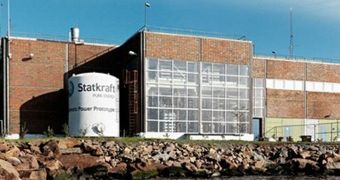Renewable energy comes in all shapes and sizes, from the radiation of the Sun to the air flows that winds generate and the heat emanating from deep within our planet's core. But researchers thinking outside the box also discovered that harnessing pressure differences could also produce energy. This is the main operating principle of osmosis, a concept that refers to what happens when two bodies of water of different concentrations meet at a semipermeable membrane. Their rapid interaction causes pressure differences, which can be tapped and harnessed, New Scientist reports.
The first power plant to make use of these principles has been recently opened in Norway by the company Crown Princess Mette-Marit Statkraft, and is located in the town of Tofte, South of the capital Oslo. The inauguration ceremony took place on Tuesday, and numerous officials attended the grand opening. “This new technology generates electricity simply by mixing water. New solutions to meet the climate challenges might be closer than we expect, which makes me confident that the future looks bright,” Statkraft's Chief Executive, Bard Mikkelsen, said, quoted by Sci Tech Today.
“The idea to generate power through osmosis originates from the 1970s. But back then the membranes were not sufficiently effective and the power prices were too low to enable anyone to profitably invest in such projects. Scientists at the research organization SINTEF brought the idea to Statkraft in the 1990s,” a press release on the company's website, published earlier this year, said. “Osmotic power could contribute around 1,600 TWh on a global basis annually. Only in Norway osmotic power has the potential to cover 10 percent of the total power consumption,” it continued.
The power plant itself is constructed in such a way that it allows for the channeling of freshwater from a nearby river and seawater from the ocean alongside a membrane, where various equipments create a pressure difference equivalent to a water column more than 120 meters high. Turbines are used to capture this immense energy, and to convert it into electrical energy, which is then fed into the country's national power grid. Freshwater is siphoned from the mouth of the river, just before it spills into the sea, so that the ecosystem there is not adversely affected.
This approach to harnessing energy is very effective, and could have considerable results if applied in major cities around the world. Population centers such as New York, Tokyo, Rotterdam, and San Francisco could all benefit from such power plants, which could ensure that at least a fraction of their energy demands is met from sources other than coal, natural gas and oil. Coupled with solar panels, geothermal generators and wind turbines, the new technology could ensure that renewable energy gains a high percentage in accounting for the total power use at these locations.

 14 DAY TRIAL //
14 DAY TRIAL //